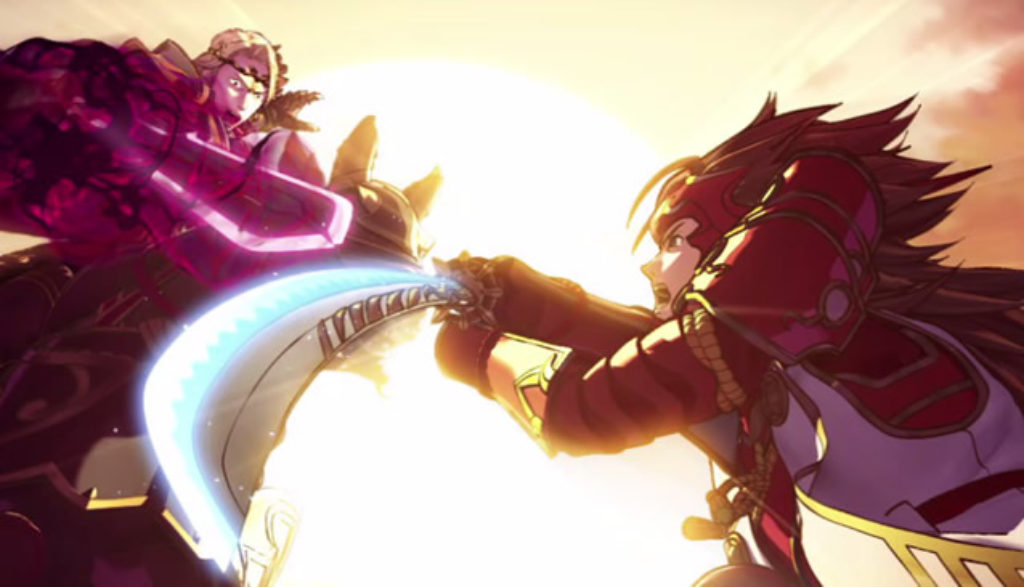
The Fire Emblem game series has always been about the strategic choices and on-field losses of war. But that focus is stretched in new directions with Fire Emblem Fates—a game that’s been expanded and broken up into three different parts … with three separate price tags.
OK, so how does this one-game-for-the-price-of-two-or-three thing work? Well, let’s start with the story.
Fire Emblem Fates tells the tale of a war between the otherworld kingdoms of Nohr and Hoshida. You first create a male or female character to represent yourself and then quickly come to realize that your avatar is, in a way, a royal citizen of both of those warring kingdoms. He or she is a biological descendant of the Hoshidian ruling family, but through some backstabbing machinations was snatched up as a child and raised as an heir of Nohr.
Early on in the game’s storyline, though, this young royal warrior—I picked a boy when I played the game—learns the facts of his true lineage and must decide where his loyalties lie. Will he fight beside his newfound blood relatives in the rebel nation of Hoshida or side with the siblings he’s always known and loved—knowing, of course, that peace can only be found with the fall of Nohr’s wicked king.
That crucial decision point of loyalty and betrayal is where the three different game paths diverge. If you decide to stick with Hoshida and want to follow that story, then you must purchase the Birthright version of the game. Going with Nohr requires the Conquest version. And a third “I ain’t sidin’ with nobody” path, Revelation, is made available through a DLC download thereafter. (Note that with either the Birthright or Conquest cartridges in hand, you can download either of the other two paths digitally.)
The gamemakers, of course, hope you’ll want to experience all three to see how the intertwining but separate tales play out. And after playing through two of the three games, I can attest to the fact that there are indeed different stories, different battles, different characters and different levels of difficulty to be found in the Birthright and Conquest campaigns.
Turn-based strategic combat is the biggest chunk of the gameplay. You build an army of different characters, military types and warrior classes—more knights and lancers with Nohr, ninjas and samurais with Hoshida. And you advance through a wide variety of maps and objectives, mixing and matching your forces to the best advantage against the human troops or nasty monsters you face.
In those battles, characters use swords, pikes, axes, arrows and magic blasts. But, thankfully, while the fighters will cry out or slump over while absorbing blows, there’s little to no gory mess in the third-person slashes and slams.
The difficulty level you choose, however, can make an emotional difference in your play. The easiest level lets a bested fighter spring back into the fray. And a medium setting lets him stroll back after a short rest. But choosing the highest level of difficulty means fallen figures—including good friends and family members—are dead and gone forever. (And I’ll note that some of them breathe out a final “d–mit!” before shuffling off their mortal coil.) That certainly delivers a palpable sense of loss after developing a “relationship” with a virtual comrade in repeated conflicts as well as home-base interactions.
Speaking of relationships, Fire Emblem Fates has a few unexpected love letters in its military footlocker. The members of your army can get to know one another better through conversations, downtime recreation and battlefield team-ups. This creates rising grades of affection among them that plays out in stronger support when fighting side by side in battle.
It can also lead to love and marriage. We don’t see any lip-locks or other such physical interactions, though some of the female anime characters can sport rather fully fleshed-out curves that the camera doesn’t mind lingering on. With time, the married couples can produce children who—through a mystical time-warp plot device—grow into adulthood and end up fighting beside their parents.
And it should be noted that for the first time in a Nintendo game, same-sex couples can get married, too. (There are no offspring arising from those unions.) In the Conquest path, your male character can spot another guy who will speak words of love and eventually propose. And the Birthright edition offers up a certain lady who wants a wife by her side. (Both of those characters can also, reportedly, be found in the Revelation path.)
Now add a drenching rain of polytheistic spirituality. It’s never very well defined, but from the calling of “ancient gods” to the casting of spells and the rising of the dead from their graves, it’s made clear that this is a virtual place of dark spirituality and magicking.
Fire Emblem Fates, then, is all about the multi: multi-parts, multi-facets and -quests, multi-enjoyments … and multi-problems.

After spending more than two decades touring, directing, writing and producing for Christian theater and radio (most recently for Adventures in Odyssey, which he still contributes to), Bob joined the Plugged In staff to help us focus more heavily on video games. He is also one of our primary movie reviewers.